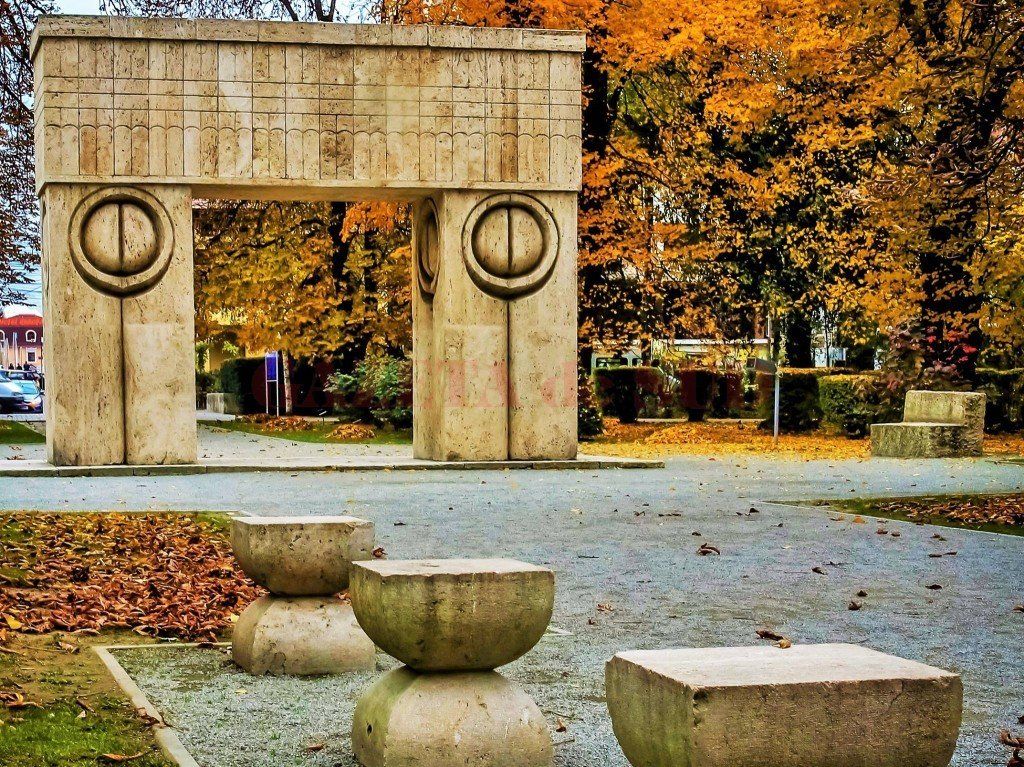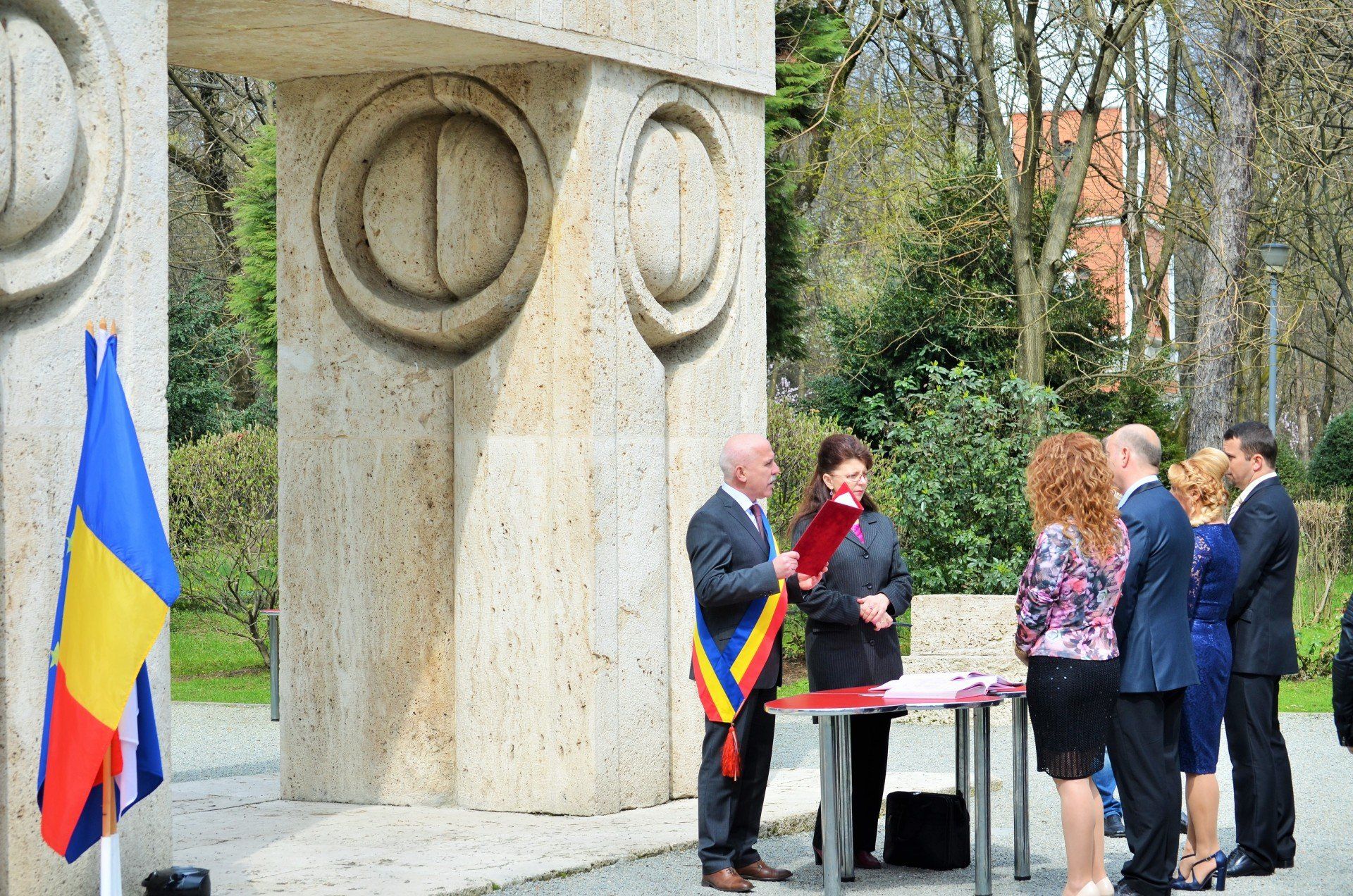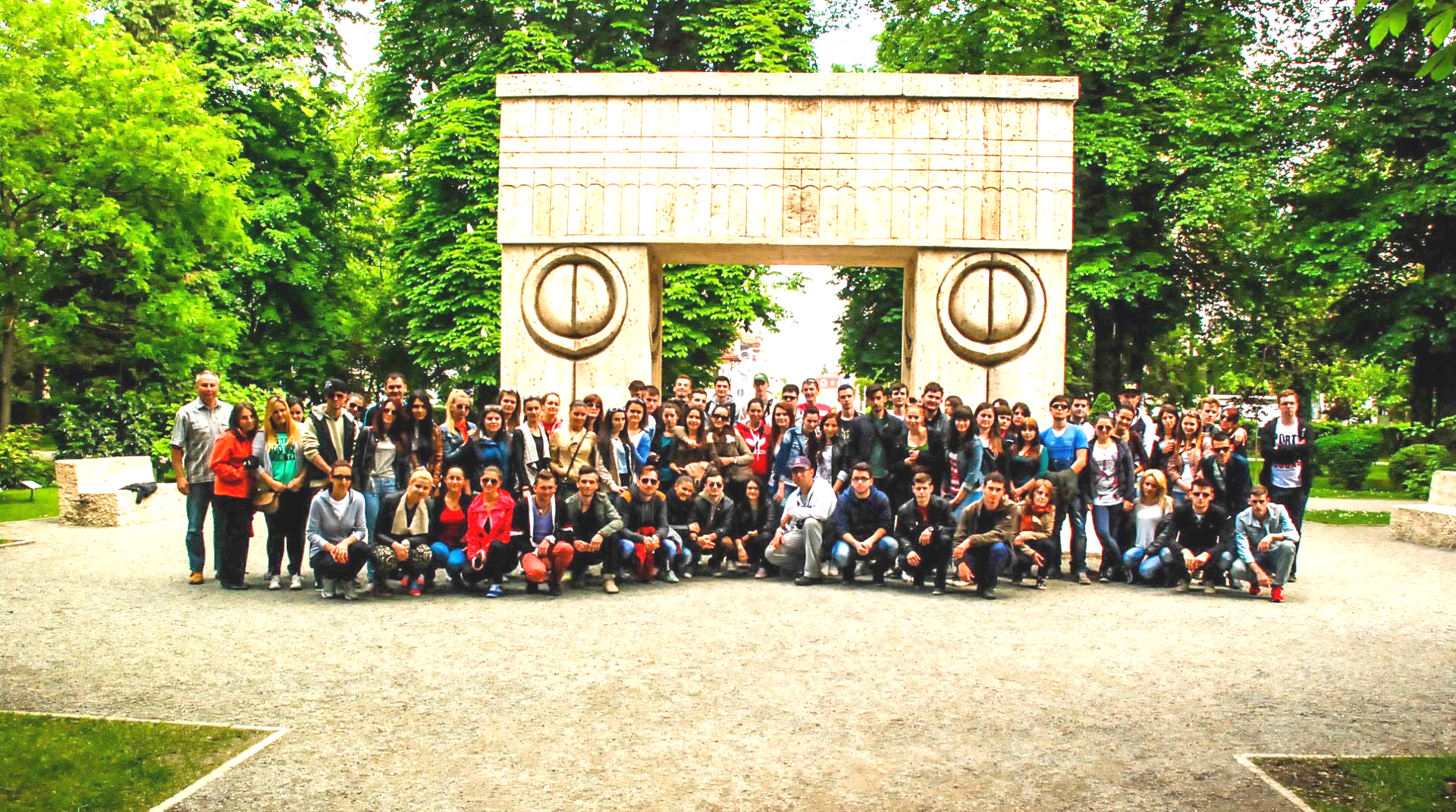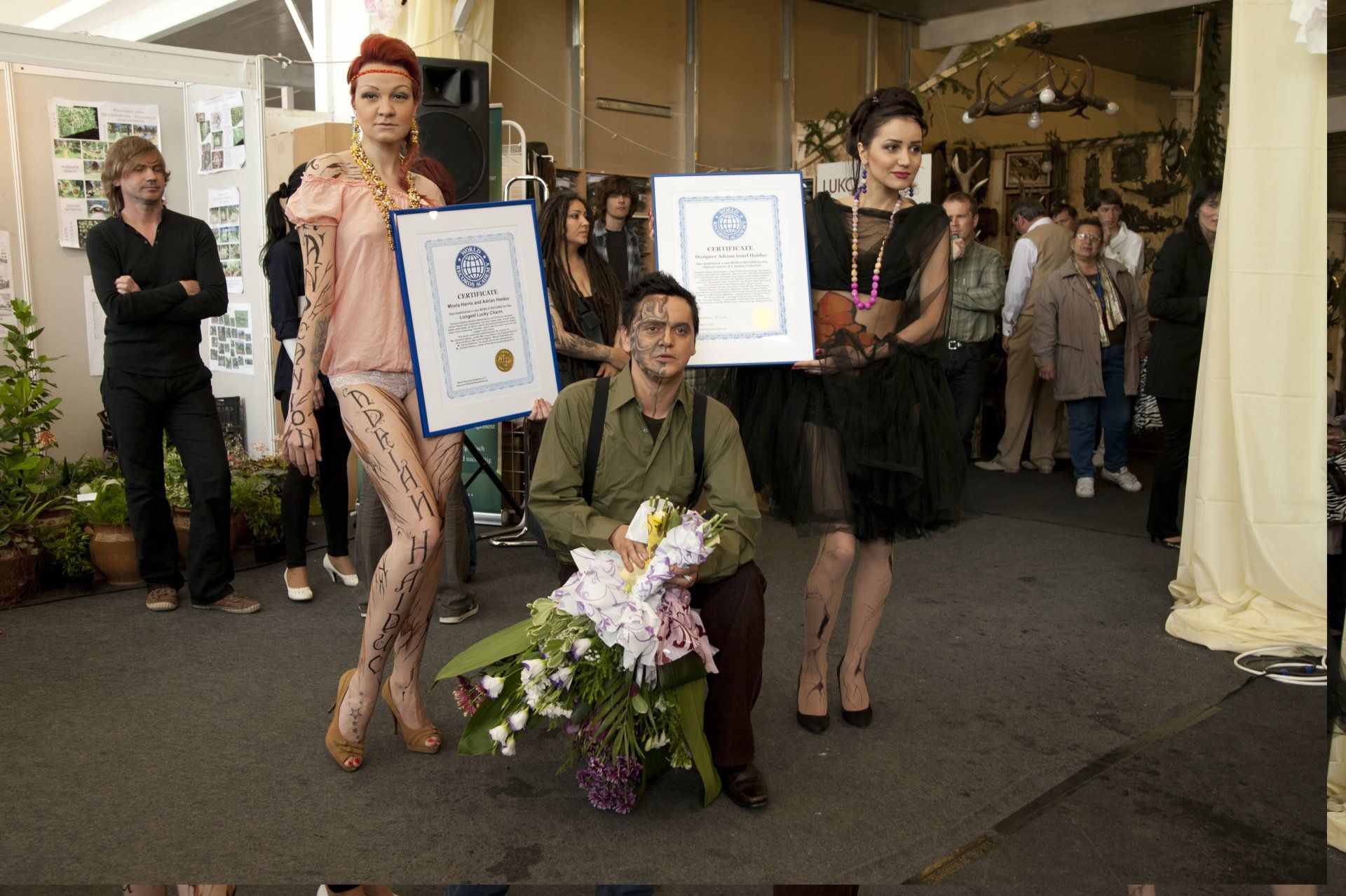Largest monument to the kiss: The Gate Of The Kiss by Constantin Brancusi sets world record
March 2, 2020

TARGU JIU, Gorj, Romania--The Gate of The Kiss, a stone sculpture, made by Romanian Constantin Brâncuși, part of the triptych of the Monumental Ensemble in Târgu Jiu, is carved out of porous stone, extracted from the quarries around it, measuring 6.45 m wide, 5.13 m high and 1.69 m thick, thus setting the world record for being the World's Largest monument to the kiss, according to the WORLD RECORD ACADEMY.
Photo: Largest monument to the kiss: The Gate Of The Kiss by Constantin Brancusi. Photo: Ștefan Jurcă/Germany
On the faces of each column is the symbol of the kiss, two halves of a circle, characteristic of Brancusi's work. In addition, there are inlays that bring with a kind of roof of the gate, as if the gate would be covered with shingles.
The kissing gate looks like a triumphal arch, symbolizing the triumph of life over death.
On the faces of each column is the symbol of the kiss, two halves of a circle, characteristic of Brancusi's work. In addition, there are inlays that bring with a kind of roof of the gate, as if the gate would be covered with shingles.
The kissing gate looks like a triumphal arch, symbolizing the triumph of life over death.
The Sculptural Ensemble of Constantin Brâncuși at Târgu Jiu is an homage to the Romanian heroes of the First World War.
The ensemble comprises three sculptures: The Table of Silence, The Gate of the Kiss
and the Endless Column, on an axis 1,300 m (4,250 ft) long, oriented west to east. The ensemble is considered to be one of the great works of 20th-century outdoor sculpture.
The monument was commissioned by the National League of Gorj Women to honor those soldiers who had defended Târgu Jiu in 1916 from the forces of the Central Powers. Constantin Brâncuși (1876–1957) was at the time living in Paris, but welcomed the opportunity to create a large commemorative sculpture in his homeland. He accepted the commission in 1935, but refused to receive payment for it.
"Work like a slave, command like a King, create like a God."
Constantin Brancusi
Constantin Brâncuși February 19, 1876 – March 16, 1957) was a Romanian sculptor, painter and photographer who made his career in France. Considered a pioneer of modernism, one of the most influential sculptors of the 20th-century, Brâncuși is called the patriarch of modern sculpture.
One of his major groups of sculptures involved the Bird in Space — simple abstract shapes representing a bird in flight. The works are based on his earlier Măiastra series. In Romanian folklore the Măiastra is a beautiful golden bird who foretells the future and cures the blind. Over the following 20 years, Brâncuși made multiple versions of Bird in Space out of marble or bronze.
One of these versions caused a major controversy in 1926, when photographer Edward Steichen purchased it and shipped it to the United States. Customs officers did not accept the Bird as a work of art and assessed customs duty on its import as an industrial item. After protracted court proceedings, this assessment was overturned, thus confirming the Bird's status as a duty-exempt work of art. The ruling also established the important principle that "art" does not have to involve a realistic representation of nature, and that it was legitimate for it to simply represent an abstract concept – in this case "flight".
In 1938, Constantin Brancusi finished the World War I monument in Târgu-Jiu where he had spent much of his childhood. Table of Silence, The Gate of the Kiss, and Endless Column commemorate the courage and sacrifice of Romanians who in 1916 defended Târgu Jiu from the forces of the Central Powers.
Brâncuși's works are housed in the National Museum of Art of Romania (Bucharest), the Museum of Modern Art (New York) and other museums around the world. The Philadelphia Museum of Art holds the largest collection of Brâncuși sculptures in the United States.
Brâncuși's works are housed in the National Museum of Art of Romania (Bucharest), the Museum of Modern Art (New York) and other museums around the world. The Philadelphia Museum of Art holds the largest collection of Brâncuși sculptures in the United States.
The GUINNESS WORLD RECORD for the largest pyramid, and the largest monument ever constructed, is the Quetzalcóatl Pyramid at Cholula de Rivadavia, 101 km (63 miles) south-east of Mexico City. It is 54 m (177 ft) tall, and its base covers an area of nearly 18.2 ha (45 acres).
GUINNESS WORLD RECORDS also recognized the world record for the largest religious structure ever built; it is Angkor Wat (City Temple), enclosing 162.6 ha (401 acres) in Cambodia.





